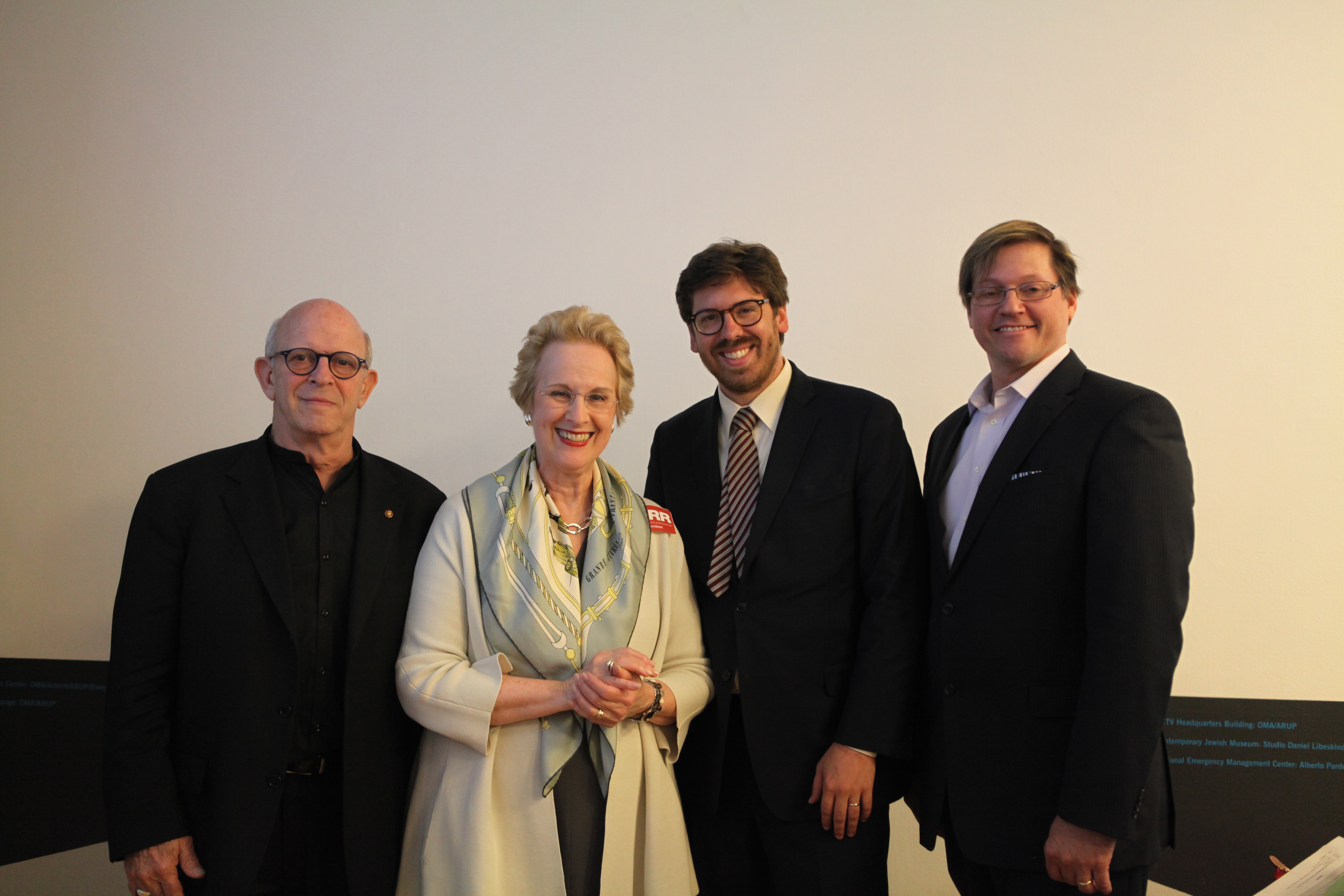by: Graham Higgins LEED AP
On 5.20.14 the AIANY Design for Risk and Reconstruction Committee (DfRR) hosted Samuel Carter, the Rockefeller Foundation’s Associate Director for Resilience. Carter, who is also currently co-leading the Design and Politics studio at Harvard’s Graduate School of Design, presented a wealth of information regarding the Foundation’s involvement in shaping and guiding the emerging paradigm of resilient design. Since its inception the Rockefeller Foundation has played a fundamental role in funding and supporting influential urban theorists. Jane Jacobs, unquestionably one of the 20th century’s most significant urban voices, wrote the 1961 The Death and Life of Great American Cities after being awarded a grant to examine the qualities of a successful city. The Foundation’s work continues to shape the field of contemporary urban design, particularly through a variety of resilience-based initiatives.
As Carter explained in his opening remarks, any discussion of resiliency is part of an iterative and readily evolving conversation. At its most basic, a resilient design is one that is able to withstand and even thrive when faced with a challenge. City resilience, as described in the Rockefeller Foundation’s new Resilient Cities Framework, “describes the capacity of cities to function, so that the people living and working in cities – particularly the poor and vulnerable – survive and thrive no matter what stresses or shocks they encounter.” Resilience takes many shapes throughout the world’s diverse urban environments; however, as the Foundation’s work has revealed, there are key themes and commonalities that define resiliency across a variety of contexts.
The Rockefeller Foundation focuses on resiliency through two primary initiatives: Resilience by Design (which includes the celebrated Rebuild by Design competition) and The 100 Resilient Cities Challenge. Carter’s presentation focused broadly on the Resilience by Design strategy, which emerged as a direct response to Hurricanes Katrina and Sandy. These two devastating extreme weather events forced two of our country’s most prominent cities to reexamine their regional environments and revaluate their response strategies to natural hazards intensified by climate change. According to Carter, one of Resilience by Design’s most significant goals is reassessing current practices and challenging the limitations of conventional disaster response strategies. Water, for example, poses a distinct challenge for all coastal cities, particularly when linked with the aggressive sea level rise attributed to climate change. Conventional strategies focused on paving, piping, pumping, and preventing water have led to a series of unintended consequences and recipes for disaster. A more resilient strategy, which focuses on living with water through the integration of multiple lines of defense and a long-term water management program, provides a viable alternative. Elevating crucial building systems above the 100- or 500-year flood plain, and leveraging green space’s inherent ability to absorb storm surge while simultaneously providing opportunities for increased social cohesion, minimize water’s negative impact while promoting an improved quality of urban life. Carter said that a “playbook” of resilient engineering and urban design interventions offers the opportunity to respond to any urban challenge while also improving civic experience.
While it is clear that resilience present a cornucopia of urban opportunities, the physical manifestation of resilience across the world’s diverse cultural and environmental contexts assumes an endless array of forms. Effective stormwater management strategies such as Williamsburg’s Bushwick Inlet Park improves the resilience of Brooklyn’s waterfront, but would have a much different impact in landlocked Dallas or San Antonio. Resilience, like any design paradigm, is an inherently dynamic process that assumes a variety of forms dependent upon the economic, social, and environmental context of a given area. To address these broad considerations, the Rockefeller Foundation has partnered with ARUP to develop the City Resilience Framework. The recently-released framework is an exercise in articulating the range of resilience approaches being undertaken globally. According to the report, a resilient city is one that is able to effectively balance four main tenets: leadership and strategy; health and wellbeing; economy and society; and urban systems and services. The framework introduces and develops an additional set of four variables (12 total) that further define each of the four main tenets to inform an understanding of a city’s resiliency. The overall goal is to form the basis for a tool which will enable those interested in urban resiliency to employ a common understanding and a baseline for what makes a city resilient. Creating a meaningful index for something as complex and multifaceted as resiliency poses significant challenges, but also provides distinct opportunities to prepare our increasingly urban world for climate change and other future disturbances.
The Rockefeller Foundation’s goal is to produce a tool capable of distilling urban resilience into a readily replicable yet dynamic concept capable of addressing the challenges cities face across local, regional, and global scales. Just as the U.S. Green Building Council’s LEED (Leadership in Energy and Environmental Design) certification system has served to shape and popularize the often abstracted concept of sustainability within the design world, the Foundation’s City Resilience Framework gives resiliency a mainstream voice with global projection. Nonetheless, concretizing a fluid concept such as resiliency has the potential to confine the process and limit it to specific parameters. Resiliency, much like sustainability, is an almost mythic concept. A truly resilient city is one that thrives in response to any challenge. True resiliency is, perhaps ironically, an unattainable goal, but its pursuit is unquestionably crucial to the success of our increasingly urban species. The creation of resilient cities is of paramount importance and will not be easily achieved, but with insightful organizations such as the Rockefeller Foundation leading the charge, the future has the potential to be a bright one.
Graham is the Director of Project Resiliency for the New York City-based Development Management firm Cirgenski + Capalino and covers a variety of sustainability and resiliency issues concerning the built environment.
Event: Resilience by Design
Location: Center for Architecture, 05.20.14
Speaker: Samuel Carter, Associate Director, Resilience, The Rockefeller Foundation
Organizers: AIANY Design for Risk and Reconstruction Committee








